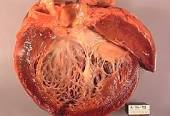I’m writing about cardiotoxicity testing because I was diagnosed with chemotherapy-induced cardiomyopathy in late 2010, 15 years after I underwent several cardiotoxic chemo regimens aka known chemo regimens that can damage the cancer patient’s heart.
Cardiotoxicity, the short, long-term and possibly late stage side effect of certain chemotherapy regimens damaging the patient’s heart is serious but rarely discussed, measured, much less tested for side effect.
The research linked and excerpted below may indicate diagnostic testing that may go a long way in identifying and preventing this side effect.
Chemotherapy regimens shown to be cardiotoxic aka damage the patient’s heart-
Cardiotoxicity refers to the potential damage to the heart caused by certain medications, including some chemotherapy drugs. Not all chemotherapy drugs have cardiotoxic effects, but some are known to carry a risk. It’s important to note that the degree of cardiotoxicity can vary, and the risk may be influenced by factors such as the cumulative dose of the drug, pre-existing heart conditions, and the presence of other risk factors.
Some chemotherapy drugs associated with cardiotoxicity include:
- Anthracyclines: These are a class of drugs that includes doxorubicin, daunorubicin, epirubicin, and idarubicin. Anthracyclines are commonly used in the treatment of various cancers, but they are known to carry a risk of cardiotoxicity, particularly when used at high doses or over prolonged periods.
- Trastuzumab (Herceptin): This targeted therapy is often used in the treatment of breast cancer, particularly in cases where the cancer cells overexpress the HER2/neu receptor. While effective in treating cancer, trastuzumab can sometimes lead to cardiotoxicity.
- Tyrosine kinase inhibitors (TKIs): Certain TKIs, such as sunitinib, sorafenib, and dasatinib, have been associated with cardiotoxic effects. These drugs are commonly used in the treatment of various cancers, including renal cell carcinoma and leukemia.
- Proteasome inhibitors: Bortezomib, a proteasome inhibitor used in the treatment of multiple myeloma, has been associated with cardiovascular side effects.
- Immune checkpoint inhibitors: While not traditionally thought of as chemotherapy, immune checkpoint inhibitors like ipilimumab and nivolumab have been associated with immune-related cardiotoxicities.

While cardiotoxicity testing can be an important step forward in the prevention of heart damage from chemotherapies, if I were a cancer patient considering one or more of the chemo regimens mentioned above, I would consider evidence-based therapies shown to support heart health during chemo.
Such as frequent, moderate exercise, nutritional heart healthy supplementation, and heart healthy nutrition.
Are you a cancer patient who has undergone cardiotoxic chemo? If you’d like to learn more about supporting your heart health during chemo, send me an email at David.PeopleBeatingCancer@gmail.com
Hang in there,
David Emerson
- Cancer Survivor
- Cancer Coach
- Director PeopleBeatingCanceer
“Cancer therapies can induce life-threatening cardiovascular side effects such as arrhythmias, muscle cell death, or vascular dysfunction.
New technologies such as cardiotoxicity testing, have enabled cardiotoxic compounds to be identified earlier in drug development. Human induced pluripotent stem cell (hiPSC)-derived cardiomyocytes (CMs) and vascular endothelial cells (ECs) can screen for drug-induced alterations in cardiovascular cell function and survival.
However, most existing hiPSC models for cardiovascular drug toxicity utilize two-dimensional, immature cells grown in static culture. Improved in vitro models to mechanistically interrogate cardiotoxicity would utilize more adult-like, mature hiPSC-derived cells in an integrated system whereby toxic drugs and protective agents can flow between hiPSC-ECs that represent systemic vasculature and hiPSC-CMs that represent heart muscle (myocardium).
Such models would be useful for testing the multi-lineage cardiotoxicities of chemotherapeutic drugs such as VEGFR2/PDGFR-inhibiting tyrosine kinase inhibitors (VPTKIs).
Here, we develop a multi-lineage, fully-integrated, cardiovascular organ-chip that can enhance hiPSC-EC and hiPSC-CM functional and genetic maturity, model endothelial barrier permeability, and demonstrate long-term functional stability.
This microfluidic organ-chip harbors hiPSC-CMs and hiPSC-ECs on separate channels that can be subjected to active fluid flow and rhythmic biomechanical stretch. We demonstrate the utility of this cardiovascular organ-chip as a predictive platform for evaluating multi-lineage VPTKI toxicity. This study may lead to the development of new modalities for the evaluation and prevention of cancer therapy-induced cardiotoxicity.”
The investigators worked with induced pluripotent stem cells, which are blood cells that have been reprogrammed into stem cells and can be turned into any cell type in the body. They used the stem cells to create two types of heart cells, but instead of placing them all together in an unstructured cell culture dish, as is usually done in heart toxicity testing, the investigators introduced the cells into specialized chips.
The 3D chips feature two channels that are arranged to cross each other, keeping each cell type separate but allowing them to interact. The chips also allow for movement and the introduction of fluids.
“We grew heart muscle cells and blood vessel cells,” said Arun Sharma, PhD, a research scientist in the Board of Governors Regenerative Medicine Institute, Smidt Heart Institute, Cedars-Sinai Cancer, and the Department of Biomedical Sciences at Cedars-Sinai and senior author of the study. “The chip allows us to stretch the cells back and forth to mimic a heartbeat, and to introduce fluid to mimic the flow of blood through the heart. It’s like giving the cells a workout that strengthens the muscle cells and allows the vessel cells to form mini blood vessel-like structures.”
These “matured” cells provide a better test platform for drug toxicity studies than cells that haven’t undergone this maturation process because they more closely resemble the way adult heart cells function, Sharma said.
To demonstrate the proficiency of heart-on-a-chip as a drug-testing platform, the research team, including lead author and postdoctoral fellow Maedeh Mozneb, PhD, subjected the heart chip to a chemotherapy drug called a VEGFR/PDGFR-inhibiting tyrosine kinase inhibitor, which is known to have adverse effects on heart muscle and blood vessel cells. Damage was observed to both cell types in the heart chips.
If future studies continue to show good results, heart-on-a-chip technology could significantly reduce drug development costs and improve the rate at which new therapies become available.
Another future possibility for these heart chips is the creation of patient-specific chips to personalize cancer treatment.
“If a patient with cancer might receive a treatment that could have adverse effects on their heart, we can create induced pluripotent stem cells from a small sample of their blood,” Sharma said. “We can turn those stem cells into heart muscle and blood vessel cells and put them on a chip that will serve as a personalized avatar for how that person’s heart might react to the treatment. This is one of the most exciting applications of this technology, truly advancing personalized medicine at Cedars-Sinai.”




